| H15-44 | H16-144 |
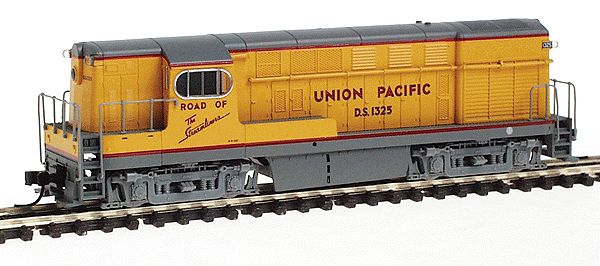 | 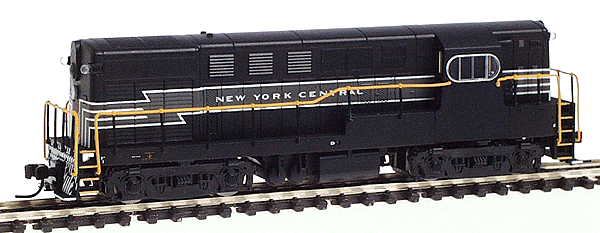 |
| H15-44 | H16-144 |
 |  |
Introduced: 2003 (first version) and 2025 (DCC Sound version)
Internally, Atlas's H15-44 and H16-44 models are identical. Externally, the main differences are the little removeable plastic side skirting pieces that cover the fuel tank on some of the H15-44's. Beyond that, Atlas offers various prototype-dependant variations in shell detailing - body-mounted handrails, sill-mounted handrails, no handrails at all, square cab windows, round cab windows, etc. These models also have a really cool system of "classification lighting". In addition to the normal directional (white LED) head and tail lights, there are bi-color (greeen/red) LEDs on each end that illuminate markers on the shell (green on the forward side and red on the back end) -
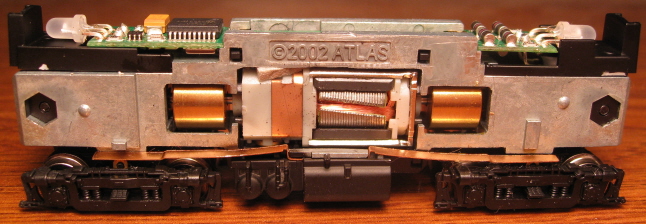
The 2003 mechanism sports all the other features one normally associates with "modern" Atlas diesels - IE, split-frame / all-metal chassis, 5-pole / skew-wound "scale speed" motor, dual flywheels, low-friction drive, all-wheel drive and pickup (no traction tires), blackened / low-profile wheels, shell-mounted Accumate couplers, all-plastic gearing, etc. The chassis is fully DCC-Ready (and, in fact, available with a factory-installed decoder).
Performance on the 2003 version is perfect in every way - smooth, quiet, flawless pickup and throttle response, exceptional pulling power, etc.
Note - a reported issue with at least one production run of this first version relates to the tiny male universals (520104 / 540104) that make up part of the mechanism's drivetrain. Said plastic parts are press-fit inside the flywheels and have a tendancy to degrade/crack over time (to the point that they no longer spin when the flywheels spin). The solution is to order replacement parts from Atlas. Or, failing that, simply use some super glue to fix them more firmly in place.
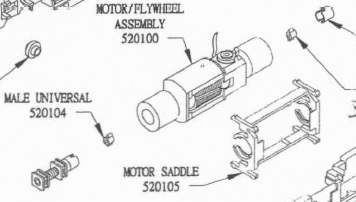
As noted above, Atlas released all-new H15-44 models in 2025. These were available either DCC-Ready or with factory-installed ESU LokSound decoders. The internals were redesigned along the lines of the 2024 Atlas Trainmaster re-release. IE, rather than using the old split-frame chassis to transfer current to the main PC board, the chassis is now essentially one big hunk of metal with wires from the trucks transferring current directly to the board. Additional wires from the board transfer current to the motor contacts. LEDs mounted to either end of the board provide light for the headlight, backup light and classification lights. The drivetrain components drop inside of the chassis and a separate metal lid screwed to the top holds everything in place. The main PC board is screwed to the top of the chassis lid and comes with a preinstalled speaker on all models. The DCC interface (designed by ESU) is designated as "E24".

And hurray, the problematic male universals were jettisoned in favor of more robust u-joints -
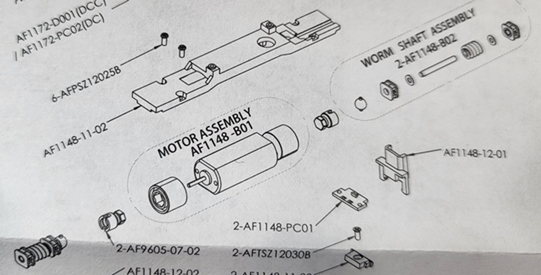
Everything else (trucks, fuel tank, shell, etc) look to be the basically same as on the previous version, so it should be a simple task to swap shells between the two.

Performance on this new version is outstanding in every way and every bit the equal of the previous version. Slow speed creep is particularly impressive as I can run mine all day long at speed step 1 without a single hiccup.
Prototype information -
"In the late 1940s, the design team at Fairbanks-Morse (FM) set out to develop an 8-cylinder 1,500-horsepower all-purpose road switcher using their opposed-piston diesel engine design. By September 1947 FM had produced the first H15-44 locomotive in the form of Demonstrator FM 1500. The hood-unit style body included distinctive features such as slightly sloped ends, rounded corners, oval cab-side windows and a raised, rounded headlight base on each end.
"The first purchaser of the H15-44 was Monon, who quickly bought both the demonstrator and the second unit built in December 1947. Three units were then built for Rio Grande before additional demonstrators were produced later in 1948. Before production ended in mid-1949, a total of 35 units had been built, with Jersey Central owning the most units (14 total).
"By 1950 other builders had increased the horsepower of their competing road switchers, and FM responded with the 8-cylinder 1,600-horsepower H16-44 model. The earliest units were externally very similar to the previous H15-44. MKT 1591 was initially ordered as an H15-44, but was upgraded to 1,600hp during production.
"The first true production H16-44s were ordered by Jersey Central. Several large railroads purchased this model, including Santa Fe, New York Central, Southern and Pennsylvania. A total of 99 units would be produced before production of the phase I version ended in December 1952. FM continued to produce H16-44s with phase II and III body styles through 1963.
"Our model represents the phase I body style of both the H15-44 and H16-44 that was produced between 1947 and 1952. Options include FM or AAR truck side frames, high or low-mounted headlights, early or late-production phase 1 hoods and a removable fuel tank skirt."
To remove the shell, stick a couple of toothpicks (or whatever) between the shell and chassis and pry the sides out a bit. The shell should lift up and off quite readily at that point.
Grade: A (for all)
Reviewed: 06/03 Model Railroader ("Atlas has added a pair of excellent Fairbanks-Morse B-B road switchers to its N scale line. Both models have smooth running mechanisms and plastic bodies with railroad-specific details... Our samples closely match prototype drawings... The chassis is held in the body shell by four small detents above the trucks... The body is filled by the mechanism, weight, and a PC board containing the headlight and classification light circuitry. The class lights on the corners of the units change color between red and green with the direction of movement... The mechanism follows the common N scale split chassis design... The sample models started and ran smoothly at normal operating speeds below 6 volts... The drawbar pull is equivalent to about 12 cars... The wheels on our samples matched NMRA standards... Our sample came neatly decorated... all the painting is first rate with sharply printed lettering, including the number boards. These early FM road switchers are great additions to the hobby's fleet of N scale first-generation diesel locomotives. CG, CNJ, DRGW, KCS, RI, UP, ATSF, NYC, NYNH, Undec. $104.95 or $139.95 with decoder")